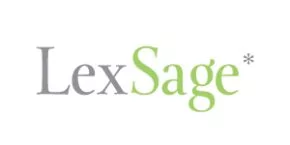On September 30, 2018, the United States, Canada and Mexico announced the conclusion of negotiations of the United States – Mexico – Canada Agreement ("USMCA") (also known as NAFTA 2.0). While the text of USMCA remains to be finalized and could take many months to be formally signed and ratified by each of the three countries, a preliminary text of the new requirements has been published on the USTR website. LexSage has published an USMCA Resource Guide with USMCA Chapters, NAFTA Chapters and TPP (not CPTPP) Chapters and comparison tables.
Now is the time for auto manufacturers and auto parts makers to strategize how their organizations can optimize their position within a newly framed North American auto industry.
Canadian auto manufacturers will now need to ensure that the parts that they purchase meet new and complex requirements set out in the USMCA. If they do not, their vehicles may not qualify as "originating". Vehicles produced that are not "originating", will not enjoy duty free treatment under the USMCA when they are exported to one of USMCA countries (i.e, Canada, U.S., Mexico).
This means that Canadian auto parts makers selling their parts to auto manufactures in any of the three countries will need to ensure that their parts meet these new requirements. Doing so will permit continuing sales and arguably, present new business opportunities, replacing other parts suppliers who are not prepared or cannot fulfill the requirements of the new rules.
As published on October 1, the USMCA provides the following content rules that must be met for vehicles and/or auto parts to qualify as "originating" for use in the auto industry.
1. Vehicles
The USMCA requires higher levels of North American Content (Regional Value Content) requirements starting in 2020. North American (U.S./Canada/Mexico) content requirements will increase from their current NAFTA content requirements, starting in 2020. Depending on the type of vehicle, the content requirements will differ.
(a) Passenger Vehicles and Light Trucks
- Starting in 2020, passenger vehicles and light trucks must meet a 66% North American content requirement to qualify as "originating" under the USMCA. That requirement will then increase each year until 2023 when the content required will be 75%; and
- Certain parts must be "originating": a vehicle produced in North America will qualify as "originating" and, thereby, enjoy duty free treatment under the USMCA, only if each of the engine, transmission, body and chassis, axle, suspension system, steering system and advanced battery is "originating". Further details on this requirement will be provided by each country.
(b) Heavy Trucks
Starting in 2020, heavy trucks must meet a 60% North American content requirement to qualify as "originating". That requirement will rise to 70% in 2027.
2. Parts for use in passenger vehicles and light trucks
Higher levels of North American content/Regional Value will be required starting in 2020. Depending on the part, different content requirements will apply. Parts for use in passenger vehicles and light trucks have been broken down into three categories: core parts; principal parts and complementary parts. Different content requirements apply, depending on the category of the part:
- Core Parts for use in passenger vehicles and light trucks: North American Content (Regional Value Content) required will rise to 73%/85% by 2023: The list of core parts for use in passenger vehicles and light trucks includes certain: engines, engine parts, vehicle bodies, gear boxes, drive axles, shock absorbers, lithium ion batteries and steering wheels. Depending on which method is used to calculate the North American content, in 2020, these parts will need to have 66% (net cost method)/76% (transaction method) North American content to qualify as "originating". Thereafter the content requirement will rise incrementally to 75% (net cost method)/85% (transaction method) North American content in 2023. There are some exceptions to these requirements;
- Principal Parts for use in passenger vehicles and light trucks: North American Content (Regional Value Content) required will rise to 70%/80% by 2023: Similar requirements will apply to listed principal parts for use in passenger vehicles and light trucks. The list of principal parts is long and includes certain: tires, rear-view mirrors, hydraulic fluid pumps, compressors, air conditions, electronic brake systems, clutches and shaft couplings, and airbags. Starting in 2020, principal parts will need to have 62.5% (net cost method)/72.5% (transaction value method) North American content to qualify as "originating". The required North American content will rise to 70% (net cost method)/80% (transaction value method) by 2023; and<
- Complementary Parts for use in passenger vehicles and light trucks: North American Content (Regional Value Content) required will rise to 65%/75% by 2023: The list of complementary parts includes certain: pipes, locks, catalytic converters, valves, electric motors, batteries, distributors and windshield wipers, defrosters & demisters. To qualify as "originating", complimentary parts will need to have 62% (net cost method)/72% (transaction value method) North American content starting in 2020. The required North American content will rise to 65% (net cost method)/75% (transaction value method) by 2023.
3. Parts for use in heavy trucks
North American content/Regional Value content will increase starting in 2020. Depending on the part, different content requirements will apply: Parts for use in heavy trucks have been broken down into two categories: principal parts and complementary parts. Different content requirements apply, depending on the category of the part:
- Principal Parts for use in heavy trucks: North American Content (Regional Value Content) required will rise to 70%/80% by 2027: The list of principal parts includes certain: engines, engine parts, air/gas pumps, compressors, fans, air conditioners, seat belts, brakes, gear boxes, drive axles, mufflers and radiators. For principal parts to be "originating", they will need to have 60% (net cost method)/70% (transaction value method) North American content starting in 2020. The required North American content will rise to 70% (net cost method)/80% (transaction value method) by 2027.
- Complementary Parts for use in heavy trucks: North American Content (Regional Value Content) required will rise to 60%/70% by 2027: The list of complementary parts includes certain: pumps, brake systems, bearings, electromagnetic couplings, clutches, and ignition/start equipment. Starting in 2020, complimentary parts will need to have 54% (net cost method)/64% (transaction value method) North American content to qualify as "originating". The required North American content will rise to 60% (net cost method)/70% (transaction value method) by 2027.
4. 70% North American Steel and Aluminum Content Requirements
Adding further complexity, the USMCA will introduce new requirements relating to the steel and aluminum purchases made by the vehicle producer. A passenger vehicle, light truck or heavy truck will qualify as "originating" only if at least 70% of the vehicle producer's purchases of steel and aluminum is "originating".
5. Labour Value Content Requirements
In addition to each of the above requirements, vehicles will qualify as "originating" only if the vehicle producer certifies that 40-45% (depending on the type of vehicle) of its production activities such as costs of manufacturing, assembly, R&D and information technology, are carried out by workers who earn at least US $16/hours. There are detailed restrictions on which costs can be used and to what extent they may be used as part of the calculation.
6. Partial Exemption from US 232 duties on Canadian produced autos exported to the U.S.
Canada and the U.S. signed a side letter that provides that the U.S. will provide at least a 60-day exemption from any future measures under Section 232. During that 60-day exemption period, the U.S. and Canada would seek to negotiate an appropriate outcome. In the event that, following the 60-day exemption period, the U.S. applies Section 232 measures, Canada has secured an exemption from those measures for: (i) 2.6 million passenger vehicles/year; (ii) light trucks; and (iii) U.S.$32.4 billion/year of auto parts.
The published text of the USMCA currently is undergoing a full legal review to ensure that it accurately reflects the agreement of the three countries. Once completed, the leaders of each of the U.S., Canada and Mexico will formally sign the agreement which then will be submitted for ratification by each country. While the ratification process in Canada and Mexico may proceed relatively quickly, the ratification process in the U.S. could take some time. This means that the USMCA is not likely to come into effect until 2019.
This is the time for auto manufacturers and auto parts makers to carefully review their sourcing, manufacturing operations and labor content. The new rules are complex but achieving "originating" status for your products will help to preserve existing customer demand and generate new sales opportunities.
The content of this article is intended to provide a general guide to the subject matter. Specialist advice should be sought about your specific circumstances.


